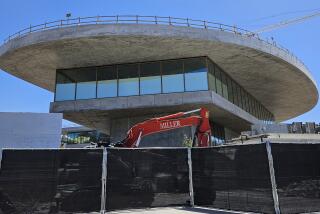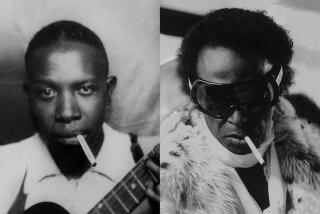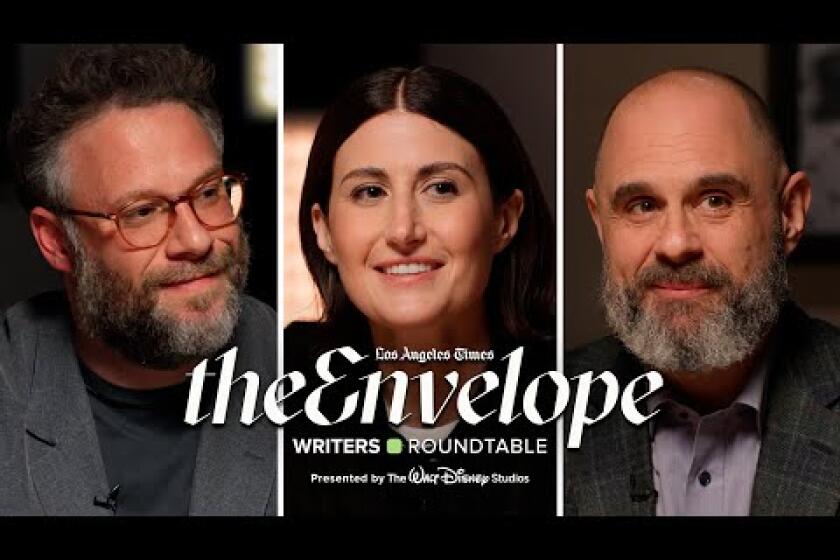Drawing on the Culture, Art of a Colonial Era : Controversy: Gifts from an Italian group, including a bust of Christopher Columbus, pose a dilemma for Bowers Museum.
- Share via
SANTA ANA — On the eve of its grand reopening after a four-year, $12-million expansion and remodel, the Bowers Museum of Cultural Art has found itself on the horns of a cultural dilemma--all over a gift.
Members of the Orange County American Italian Renaissance Foundation chose the Bowers reopening next month as the perfect time to make a major donation: $250,000, plus a bronze bust of their favorite Italian son, Christopher Columbus. In return, Bowers officials will allow OCAIRF to name not only its hall of Spanish exploration, but also three galleries in its pre-Columbian section.
Trouble is, Bowers’ prime mission is collecting, preserving and interpreting the art and culture of indigenous peoples of the Americas. Most of their descendants do not view the upcoming 500th anniversary of Columbus’ arrival in this part of the world as a festive occasion.
The grant from OCAIRF is “a good gesture on behalf of the Italian organization, because it will help Bowers,” said Huntington Beach resident Dwight Howell, a Ponca-Omaha Indian. But for Howell personally, “Anything that encompasses Columbus is not something to celebrate. I’ve got mixed emotions on it, but I do believe we should all work together toward healing.”
Some American Indians feel even more strongly. “Those that have money get what they want,” said San Juan Capistrano resident David Belardes, tribal chief chairman of the Juaneno Band of Mission Indians and member of the Acjachamen Nation. “Whether Bowers now continues with its mission, we will have to watch.”
In response, a Bowers official said: “The museum has not altered its mission in any way toward Columbus.
“As a cultural-arts institution, Bowers is interested in bringing people of all cultures together,” said Bowers curator of native American and folk art Paul Apodaca, whose heritage is Navajo-Mexican.
The $250,000 that OCAIRF is scheduled to present formally to Bowers on Oct. 8 originally had been earmarked for a county Italian-American cultural center. But after a decade of raising funds, the reality of high construction costs forced OCAIRF to find an alternative home for its meetings, according to the group’s president, Frank J. De Santis.
So two years ago the foundation shifted gears. “At the time we also became more focused on Orange County’s growing multicultural population so it made sense for us to join Bowers,” De Santis said.
Since that time, the foundation’s efforts have been redirected toward a celebration at Bowers for the Columbus anniversary, one of the only quincentennial events taking place in Orange County. The event will be capped by an unveiling and dedication ceremony for a Christopher Columbus monument that will go on permanent display at the museum.
OCAIRF initially intended for the bronze Columbus bust to be installed at the Santa Ana Civic Center Plaza, but moved it to the city-owned museum because it would better serve the community there, De Santis said. Bowers reopens to the public on Oct. 15.
New Jersey sculptor Domenico Mazzone made the bust recently from a documented description of Columbus by his son, Ferdinand. Mazzone, who designed peace medals for the 1978 Camp David Accords, also has created works for the United Nations and for the Vatican.
Bowers’ decision to let the Italian-American foundation name three galleries dedicated to the people and cultures that existed before Europeans arrived strikes some as particularly insensitive. It is, however, a standard privilege extended to donors of significant grants. As part of the gift, OCAIRF also becomes an official affiliate member of the museum, Bowers spokesman Brian E. Langston said. Membership allows the group to use the facility for regular meetings and special events.
“When it comes to money, people’s values and missions change,” said John Castillo, an Apache and executive director of the Southern California Indian Center in Garden Grove. “Our only hope is that Bowers continues to provide a balance of information of what happened to the Indian people.”
Langston, who admitted that OCAIRF naming the pre-Columbian galleries is “unusual” considering the historical connection between Columbus and the culture that flourished before his arrival, said the donation signaled “one more way of making Bowers a meeting place, almost a sacred ground for divergent opinions. Even if those opinions are controversial, we think it’s important that people can exchange ideas in hopes of understanding one another better.”
Apodaca, noting a statue of Portuguese explorer Juan Rodriguez Cabrillo that stands in the museum’s courtyard, said Bowers has “always talked about the early explorers as an avenue (by which) the rest of the world discovered the greatness of native Americans.”
“Besides,” he added, “this Italian group is supporting native American art. If they’re going to fund anything, what better than that?”
More to Read
The biggest entertainment stories
Get our big stories about Hollywood, film, television, music, arts, culture and more right in your inbox as soon as they publish.
You may occasionally receive promotional content from the Los Angeles Times.










